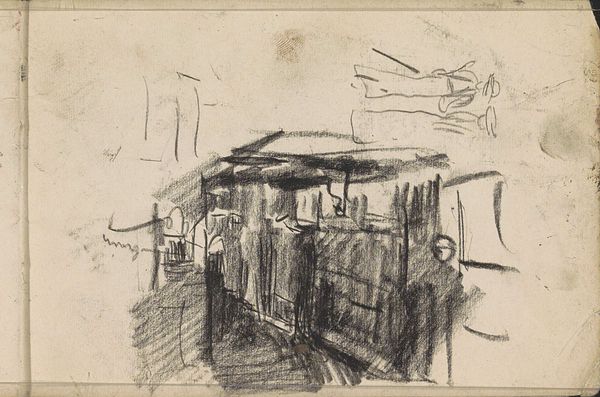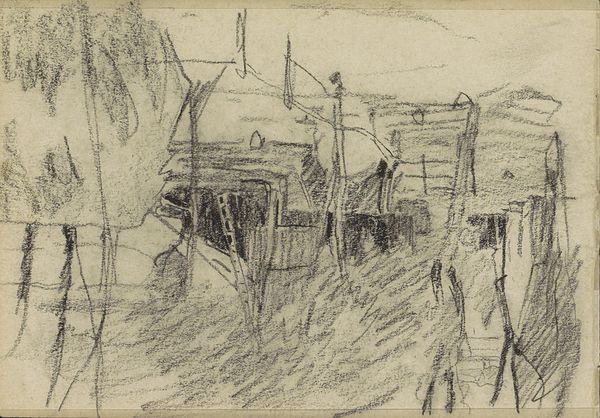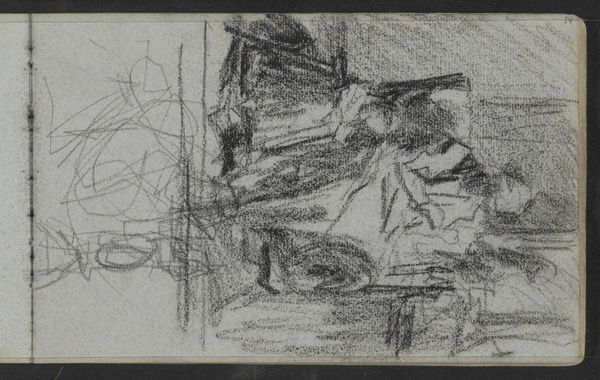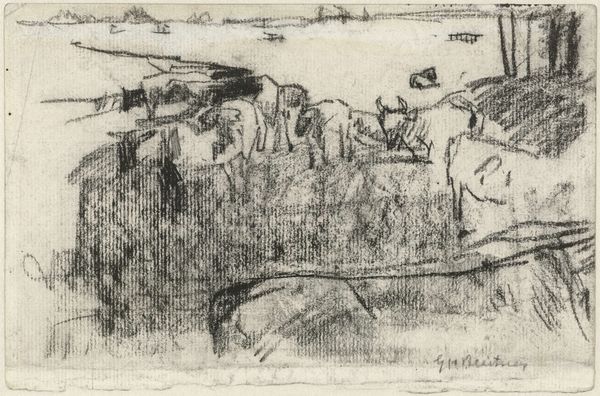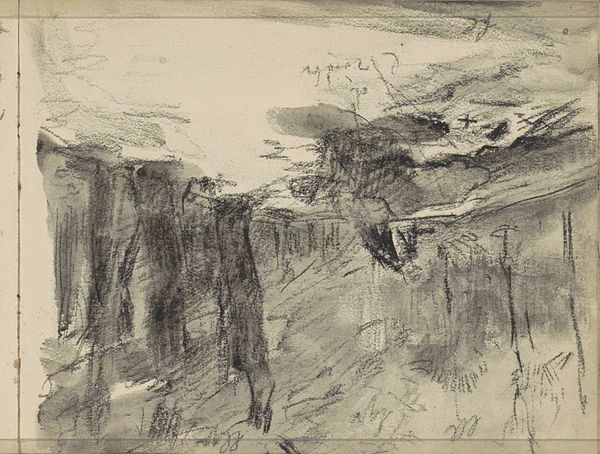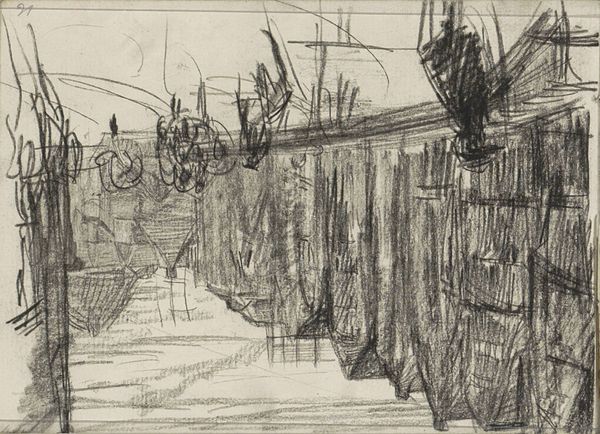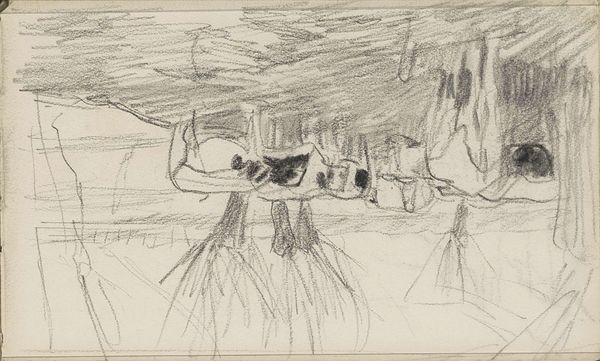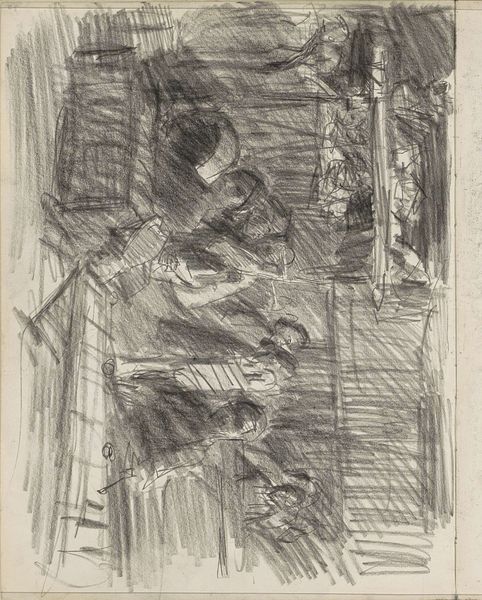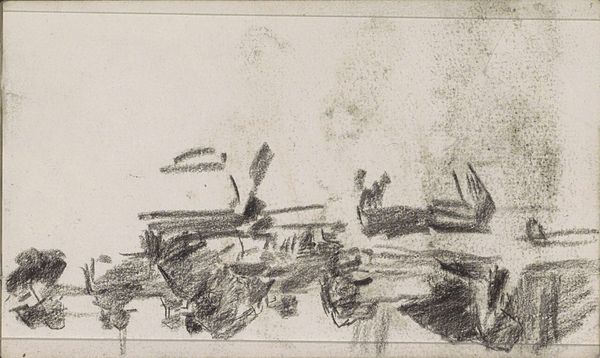
drawing, pencil, charcoal
#
drawing
#
amateur sketch
#
pen sketch
#
pencil sketch
#
incomplete sketchy
#
landscape
#
personal sketchbook
#
pen-ink sketch
#
pencil
#
pen work
#
sketchbook drawing
#
charcoal
#
sketchbook art
#
realism
#
initial sketch
Copyright: Rijks Museum: Open Domain
Johan Antonie de Jonge made this sketch of a farm, presumably in the Netherlands, sometime between the late 19th and early 20th century. Looking at this image, we might ask: what was the public role of landscape art at this time? The Dutch landscape tradition had long been associated with national identity, but by the late 19th century, many artists were more interested in capturing subjective impressions of nature rather than celebrating the nation. De Jonge's quick, expressive lines seem less concerned with topographical accuracy than with conveying a feeling. This shift towards personal expression was part of a broader trend in European art, influenced by Romanticism and later Symbolism. To understand the art of this period, we need to look not only at the art itself but at the changing social and cultural values that shaped its production and reception. Examining exhibition records, art criticism, and artists' writings can provide further insight.
Comments
No comments
Be the first to comment and join the conversation on the ultimate creative platform.
